HBSE 8th Class Social Science Solutions Civics Chapter 10 कानून और सामाजिक न्याय
Haryana State Board HBSE 8th Class Social Science Solutions Civics Chapter 10 कानून और सामाजिक न्याय Textbook Exercise Questions and Answers.
Haryana Board 8th Class Social Science Solutions Civics Chapter 10 कानून और सामाजिक न्याय
HBSE 8th Class Civics कानून और सामाजिक न्याय Textbook Questions and Answers
कानून और सामाजिक न्याय HBSE 8th Class Civics प्रश्न 1.
दो मजदूरों से बात करके पता लगाएँ कि उन्हें कानून द्वारा तय किया गया न्यूनतम मेहनतान मिल रहा है या नहीं। इसके लिए आप निर्माण मजदूरों, खेत मजदूरों, फैक्ट्री मजदूरों या किसी दुकान पर काम करने वाले मजदूरों से बात कर सकते हैं।
उत्तर:
मैं निम्नलिखित मजदूरों से बातचीत करके यह जानने की कोशिश करूँगा कि क्या उन्हें कानून के द्वारा निधारित न्यूनतम मजदूरी या मेहनताना मिल रहा है अथवा नहीं:
1. भवन निर्माण मजदूर (Construction workers):
(अ) रामदीन नामक एक पुरुष मजदूर को प्रतिदिन 90 रुपये मिलते हैं। उसे कानून के द्वारा निर्धारित न्यूनतम मजदूरी से भी कम मजदूरी मिल रही है।
(ब) श्रीमती वीना पत्नी श्री रामदीन को एक दिन का मेहनताना मात्र 80 रुपये ही मिल रहा है। इमारत को बनवाने वाला ठेकेदार महिला मजदूर को उतनी मजदूरी नहीं दे रहा जितनी कि वह पुरुष मजदूर को दे रहा है। यह भी नियमानुसार गलत है। समानता का अधिकार हमें बताता है कि दोनों मजदूरों (पुरुष तथा ‘स्त्री) को एक जैसे काम के लिए समान मजदूरी या वेतन मिलना चाहिए।
2. भूमिहीन कृषक मजदूर (Landless Farm Labourers):
एक खेत पर फसलों की कटाई के लिए प्रत्येक मजदूर को मात्र 80 रुपये मिल रहे थे। राज्य सरकार ने न्यूनतम मजदूरी 110 रुपये तय की हुई थी। यह भी भूमिहीन मजदूरों के साथ नाइंसाफी थी।
![]()
कानून और सामाजिक न्याय प्रश्न उत्तर HBSE 8th Class Civics प्रश्न 2.
भारत में अपने कारखाने खोलने से विदेशी कंपनियों को क्या फायदा मिलता है?
उत्तर:
विदेशी कंपनियों को भारत में अपना कारखाना खोलने से निम्नलिखित लाभ प्राप्त हो जायेंगे:
1. श्रम की आसान उपलब्धता (Easy availibility of Labour):
उन्हें पर्याप्त संख्या में पुरुष/स्त्री मजदूर कुशल तथा अकुशल मजदूर सस्ते यानी कम मजदूरी या वेतन पर सहर्ष काम करने के लिए उपलब्ध हो जायेंगे क्योंकि 60 वर्षों की आजादी के बाद भी भारत में करोड़ों लोग बेरोजगार हैं।
2. कार्य की अनुकूल परिस्थितियाँ (Favourable working conditions):
भारत एक शांतिप्रिय देश है। सन् 1991 की नई आर्थिक नीति अपनाने के उपरांत प्रायः मजदूर संघ शांत ही हो गये हैं। कभी प्रदर्शन होते भी हैं तो भी वे महात्मा गाँधी जी के मार्ग पर चलते हुए (शांत/अहिंसावादी/सत्याग्रही)। अधिकांश राज्य सरकार तथा केन्द्र सरकार कुल मिलाकर शांति तथा व्यवस्था बनाये हुए हैं। संक्षेप में कारखाने लगाने तथा उतपादन करने का अनुकूल माहौल है।
3. विशाल आंतरिक बाजार (A Large Internal Market):
भारत आज लगभग 110 करोड़ लोगों का देश है। चीन के बाद विश्व में जनसंख्या की दृष्टि से भारत को दूसरा स्थान प्राप्त है।। भारी जनसंख्या के कारण भारत के विशाल में आन्तरिक बाजार में लगभग हर उत्पादन की भारी माँग है।
4. अनुकूल भौगोलिक परिस्थितियाँ (Favourable Geographical Conditions):
भारत की भौगोलिक परिस्थितियाँ – बहुत ही अनुकूल हैं। भारत की उत्तरी सीमा को छोड़ तीनों दिशाएँ (पूर्वी, पश्चिमी तथा दक्षिणी) समुद्र से घिरी हुई हैं अर्थात् यहाँ विदेशी कंपनियाँ समुद्री मार्ग (जल-यातायात) का प्रयोग कर सकती हैं। यह यातायात आज भी प्रायः सस्ता माना जाता है। विदेशी कंपनियाँ विश्व के किसी भी कोने को अपना उत्पाद भारत से निर्यात कर सकती हैं।
5. आधारभूत सुविधाएँ (Infrastructural facilities are available):
भारत एक विकासशील देश है। प्रायः विशेषज्ञ मानते हैं कि 2020 तक भारत विश्व की महानतम शक्तियों में से एक होगा। हो सकता है, कि उसे विश्व में तीसरा या चौथा स्थान प्राप्त हो जाये। यहाँ पर्याप्त सड़कें, रेलवे लाइन्स, विद्युत, यातायात एवं संवादवहन सुविधाएँ, तकनीकी संस्थान, शैक्षिक संस्थाएँ, प्रशिक्षण केन्द्र आदि उपलब्ध हैं। इस देश में व्यापारियों, पर्यटकों, सौदागरों के ठहरने एवं निवास के लिए स्थान, वायु सेवाएँ तथा होटल-रेस्टोरेंट आदि की सुविधाएँ कम दाम पर ही उपलब्ध हैं।
कानून और सामाजिक न्याय Notes HBSE 8th Class Civics प्रश्न 3.
क्या आपको लगता है कि भोपाल गैस त्रासदी के पीड़ितों को सामाजिक न्याय मिला है? चर्चा करें।
उत्तर:
(i) मेरे विचारानुसार लगभग 24 वर्षों का इतना ज्यादा लंबा समय बीत जाने के बाद भी गैस रिसाव के कारण पीड़ित लोगों एवं उनके बाद बचे उनके रिश्तेदारों एवं आश्रितों को आज तक सामाजिक न्याय नहीं मिला है।
(ii) भोपाल (मध्य प्रदेश की राजधानी) में अमेरिकी कम्पनी यूनियन कार्बाइड (Union Carbide) कीटनाशकों का निर्माण करती थी। 2 दिसंबर, 1984 को आधी रात के वक्त मिथाइल आइसोसाइनाइड रिसने (Leaking) लगी। यह बेहद जहरीली गैस होती है। केवल तीन दिनों में ही 8000 लोगों की मृत्यु हो गई। सैंकड़ों की संख्या में अंगहीन (पंगु) या विकलांग हो गये। .
(iii) अधिकांश लोग जो गैस दुर्घटना से पीड़ित हुए थे उनका संबंध गरीब मजदूर-परिवारों से था। उनमें से लगभग 50,000 व्यक्ति कार्य करने की क्षमता खो बैठे हैं। जो इस दुर्घटना के प्रभाव में आकर बच गए उन्हें साँस तथा आँख की बीमारियाँ लग गई है।
(iv) जो पीड़ित लोगों के कानूनी उत्तराधिकारी थे तथा उन पर आश्रित थे उन्हें अभी तक पर्याप्त सहायता राशि या क्षतिपूर्ति प्राप्त नहीं हुई है।
कानून और सामाजिक न्याय कक्षा 8 HBSE Civics प्रश्न 4.
जब हम कानूनों को लागू करने की बात करते है तो इसका क्या मतलब होता है? कानूनों को लागू करने की जिम्मेदारी किसकी है.? कानूनों को लागू करना इतना महत्त्वपूर्ण क्यों हैं?
उत्तर:
I. अर्थ (Meaning):
जब हम कहते हैं कि कानून लागू हों तो इसका तात्पर्य है कानून अपना काम करे। (Law should take its own course)कानून बनाने का काम विधायिकाओं (संसद तथा विधान मंडलों/विधानसभाओं) आदि का है। उसे लागू करने का कार्य कार्यपालिका (कार्यकारिणी) का है। कानून को सर्वोच्च स्थिति दी जाये। देश का कानून सर्वोच्च है। उसे तुरंत और शक्तिशाली ढंग से लागू किया जाये ताकि कानून-व्यवस्था बनी रहे। लोगों की जान-माल तथा मान की रक्षा की जा सके।
II. जिम्मेदारी (Responsibility):
केंद्र तथा राज्यों की सरकारें कानून को लागू करने के लिए उत्तरदायी हैं। केन्द्र में गृहमंत्री तथा उसके मंत्रालय से जुड़े अन्य मंत्री तथा अधिकारी गण आंतरिक कानून एवं व्यवस्था को बनाये रखने के लिए जिम्मेदार हैं। पुलिस उन्हें मदद देती है। देश के सभी राज्यों में राज्य सरकारें कानून को लागू करने के लिए उत्तरदायी हैं। केन्द्र तथा राज्य सरकारों का दूसरा अंग अर्थात् कार्यपालिका कानून लागू करने के लिए उत्तरदायी है। उन्हीं के अधीन पुलिस, रक्षा बल या होमगार्ड आदि उन्हें मदद करते हैं। कभी-कभी देश की सेना भी बिगड़ती कानून और व्यवस्था को संभालने के लिए बुलाई जाती है।
III. महत्ता (Importance):
कानून को तुरंत तथा प्रभावी तरीके से लागू करना अत्यधिक महत्त्वपूर्ण है। हमारे देश के संविधान के अनुच्छेद 21 का हनन नहीं होना चाहिए जो देश के नागरिकों को जीवन के अधिकार की गारंटी देता है। सरकार का संवैधानिक दायित्व होता है कि वह कानून और व्यवथा बनाये रखे तथा लोगों के जान-माल तथा मान की रक्षा करे।
कानून को प्रभावी ढंग से लागू करने में कई बार मजदूरों तथा गरीब निर्दोष जनता को बहुत हानि हो सकती है। यदि हम भोपाल गैस दुर्घटना को ही लें तो जानकारी मिली है कि फैक्टरी चलाने वाली कंपनी ने सुरक्षा नियमों को ताक पर रखा हुआ था। लाइसेस देने वाले लोग उसके लिए जिम्मेदार थे। दुर्घटना के प्रभावित लोगों को तुरंत मदद नहीं मिली। 24 वर्ष बीत गये पर पीड़ितों तथा उनके परिजनों को इंसाफ नहीं मिला। कानूनों को लागू करना बहुत ही महत्त्वपूर्ण है।
![]()
प्रश्न 5.
कानूनों के जरिए बाजारों को सही ढंग से काम करने के लिए किस तरह प्रेरित किया जा सकता है? अपने जवाब के साथ दो उदाहरण दें।
उत्तर:
1. हर दुकानदार या व्यापारी को अपना व्यापारिक प्रतिष्ठान/दुकान ठीक वक्त पर ही खोलना चाहिए। (याद रहे बाजारों में निर्धारित समय तक पुलिस व्यवस्था उन्हीं की सुरक्षा के लिए की जाती है।) दूसरे दुकानदारों/ व्यापारियों को आई. एस आई (ISI) भारतीय मानक ब्यूरो के द्वारा जारी किये गये प्रमाणित तराजूबाट (Weights) तथा माप (Measures) का ही प्रयोग करना चाहिए। उन्हें उत्पादक द्वारा छपी अधिकतम फुटकर कीमत (MRP) से कम ही दाम लेने चाहिए। दुकानदार को उपभोक्ता को माल देने से पहले उसकी निर्माण तिथि तथा इस्तेमाल करने की अधिकतम निर्धारित तिथि (Expiry Date) को भी ध्यान में रखना चाहिए।
2. दुकानदारों तथा व्यापारियों को मिलावटी या गलत सामान/वस्तुएं नहीं बेचनी चाहिए। नकली तथा घटिया मालों/वस्तुओं की बिक्री के लिए उसे कानून दंड दे सकता है। उन्हें अशिक्षित लोगों को भी माल पूरी तसल्ली कराकर बेचना चाहिए।
प्रश्न 6.
मान लीजिए कि आप एक रासायनिक फैक्ट्री में काम करने वाले मजदूर हैं। सरकार ने कंपनी को आदेश दिया है कि वह वर्तमान जगह से 100 किलोमीटर दूर किसी दूसरे स्थान पर अपना कारखाना चलाए। इससे आपकी जिंदगी पर क्या असर पड़ेगा? अपनी राय पूरी कक्षा के सामने पढ़कर सुनाएँ।
उत्तर:
1. प्रश्न के अनुसार मैं एक रसायन फैक्टरी (कारखाने) में मजदूरी करने वाला (या वाली) मजदूर हूँ। जहाँ पर अब फैक्टरी है वहाँ पर मैंने घर बना रखा है। मेरा पूरा परिवार, मेरी पत्नी, बच्चे तथा वृद्ध माँ-बाप.एक साथ रहते हैं। एक संयुक्त परिवार को नयी जगह पर ले जाने पर मुझे सबसे पहले एक नये मकान की तलाश करनी होगी। नये मालिक मकान को दो महीने का भाड़ा नकद देना होगा। समझौते की शर्तों पर हस्ताक्षर करने होंगे।
2. मेरे बच्चों के लिए नये स्कूल खोजने होंगे। अगर स्कूल हैं तथा उन्हें प्रवेश मिल जाता है तो सब ठीक-ठाक हो जाएगा नहीं तो निःसंदेह उनकी पढ़ाई-लिखाई में अव्यवस्था (बाधा) उत्पन्न हो जायेगी। मेरी तथा मेरे वयस्क परिवारजनों की मानसिक शांति भंग हो जायेगी।
3. नये स्थानों पर अपने राशन-कार्ड, कुकिंग गैस तथा दूरभाष नंबर भी बदलवाना पड़ेगा। नये अखबार डालने वाले ढूंढने होंगे। बाजार में जाकर अपने स्वभाव के अनुकूल विभिन्न किस्मों के सामान बेचने वाले स्टोर या दुकानें ढूँढनी होंगी। कुल मिलाकर देखा जाए तो कुछ दिन के लिए ही सही जीवन अव्यवस्थित हो जाएगा।
प्रश्न 7.
इस ईकाई में आपने सरकार की विभिनन भूमिकाओं के बारे में पढ़ा है। इनके बारे में एक अनुच्छेद लिखें।
उत्तर:
1. सरकार का एक अंग अर्थात् विधायिका से यह आशा की जाती है कि वह लोगों को विभिन्न तरह के शोषण से बचाने के लिए कानून बनाये।
2. कार्यपालिका अथवा सरकार विभिन्न तरह के विभाग, विभिन्न तरह के अधिकारीगण तथा विभिन्न तरह के कर्मचारीगण नियुक्त करती है ताकि वे उसके द्वारा बनाये गये कानूनों तथा अधिनियमों को लागू करा सकें।
3. आरोपी या दोषी पुलिस के द्वारा कैद किये जाते हैं, पकड़े जाते हैं। उन्हें न्यायालयों में पेश किया जाता है। (ये कानूनी न्यायालय हो सकते हैं अथवा उपभोक्ता न्यायालय आदि भी हो सकते हैं।)
4. न्यायपालिका द्वारा कानून को तोड़ने वालों को सजाएँ सुनाई जाती हैं।
5. सरकार नौकरी देने वाले संस्थानों/कंपनियों प्रतिष्ठानों पर भी नजर रखती है कि क्या वे उसके द्वारा (सरकार द्वारा) तय किये गये कानून के अनुसार भुगतान करते हैं अथवा नहीं।
6. सरकार यह भी देखती है। कि किसी का बंधुआ मजदूर के रूप में शोषण तो नहीं किया जा रहा। वह यह भी देखती है कि 14 वर्ष से कम आयु के बच्चों को रोजगार देकर बाल श्रमिकों के रूप में उनका शोषण तो नहीं किया जा रहा।
7. सरकार को यह भी सुनिश्चित करना होता है कि श्रमिकों को न्यूनतम मजदूरी या मेहनताना दिया जा रहा है या नहीं। साथ ही साथ सरकार यह भी देखती है कि महिला मजदूरों तथा पुरुष मजदूरों को समान वेतन या मजदूरी दी जा रही है या नहीं। (याद रहे समय-समय पर सरकार द्वारा मजदूरी व वेतन की दरें तय की जाती है।)
![]()
प्रश्न 8.
आपके इलाके में पर्यावरण को दूषित करने बाले स्रोत कौन से हैं? (क) हवा; (ख) पानी और (ग) मिट्टी में प्रदूषण के संबंध में चर्चा करें। प्रदूषण को रोकने के लिए किस तरह के कदम उठाए जा रहे हैं? क्या आप कोई और उपाय सुझा सकते हैं?
उत्तर:
I. स्रोत (Source):
हमारे क्षेत्र में निम्नलिखित स्रोतों (Sources) या साधनों से पर्यावरण (वायु जल/ मृदा/ध्वनि आदि) प्रदूषित हो रहा है:
(i) घुओं:
हलवाइयों की भट्टियों, कंकर-पत्थर पीसने वाले क्रेसरों, फैक्ट्रियों की चिमनियों, यातायात के साधनों से धुआँ निकलता रहता है तथा वह वायु को दूषित करता रहता है। यही नहीं, पुराने जमाने के कोयले से चलने वाले रेलवे इंजन तथा खुली नालियों-नालों से बदबू भी पर्यावरण विशेषतः हवा व पानी को दूषित करती है।
वे लोग जो बेघरबार हैं पटरियों पर सोकर खाली सड़कों के किनारे रखे पाइपों में रात गुजरते हैं, वे समय समय पर खुले में किसी पेड़ या झाड़ी की आड़ लेकर भी गंदगी फैलाते रहते हैं। आवारा कुत्ते, पशु आदि भी जगह-जगह पर त्यागकर स्वच्छ वायु को प्रदूषित करते हैं। डीजल से चलने वाले यंत्र, ट्रैक्टर, वाहन तथा मल-मूत्र वर्कशाप भी धुआँ छोड़कर रही-सही कसर पूरी कर देते हैं। जगह-जगह लगे गंदगी के ढेर, खुले हुए कूड़ेदान भी बदबू से लोगों के जीवन को प्राय: नरक बनाते रहते हैं।
(ii) उर्वरता कीटनाशक:
किसानों द्वारा खेतों में प्रयोग की जाने वाले उर्वरक तथा कीटनाशक भी जल को प्रदूषित करते हैं। वर्षा द्वारा ये नदियों में मिल जाते हैं तथा उसके पानी को भी दूषित कर देते हैं।
(iii) ठोस अपशिष्ट (Solid waste):
शहरों का ठोस कचरा भूमि को प्रदूषित कर देता है। कचरे का ढेर मक्खी -मच्छरों का प्रजनन स्थल बन जाता है जो अंततः निवासियों के जीवन को खतरा बन जाते है; ठोस कचरा शहरी निकायों के लिए आज गंभीर चिंता का विषय है।
II. कदम अथवा उपाय (Steps): प्रदूषण को रोकने के लिए निम्नलिखित कदम उठाये जा रहे हैं:
(i) कानून बनाना: केन्द्र तथा राज्य सरकारों द्वारा समय-समय पर जंगलों, वायु, जल, वन्य प्राणियों, नदियों, समुद्रों आदि के संरक्षण के लिए कानून बनाये जाते हैं।
(ii) बंड (Punishment):
जो लोग अनावश्यक तथा असमय ध्वनि प्रदूषण फैलात है या वाहनों तथा अन्य स्रोतों से धुआँ छोड़ते हैं उनके विरुद्ध सरकार तथा सरकारी एजेंसियों कदम उठाती हैं, कानून का भय दिखाती हैं, उन्हें आर्थिक रूप से दंडित करती हैं अर्थात् सजा के द्वारा प्रदूषण रोकने का प्रयास किया जाता
(iii) जनहित याचिकाएँ (PILs):
अनेक व्यक्ति, कानूनी विशेषज्ञ तथा गैर-सरकारी संगठन न्यायालयों में जनहित याचिकाएँ डालकर न्यायालय के माध्यम से सरकार, विधायिका, कार्यपालिका आदि का ध्यान खींच कर प्रदूषण के विरुद्ध जनमत तैयार करते हैं तथा जनसंचार माध्यमों का प्रयोग कर लोगों को पर्यावरण संरक्षण के लिए तैयार करती हैं। कई बार न्यायालय ने अपने निर्णय में सरकार तथा अधिकारियों को शुद्ध तथा स्वच्छ पीने योग्य जल प्रदान करना उनका अनिवार्य कर्तव्य तथा नागरिकों का मूलभूत अधिकार बताया है। आन्ध्र प्रदेश के माननीय उच्च न्यायालय का निर्णय इस संदर्भ में एक उदाहरण है।
III. अन्य सुझाव (Other Suggestions):
(i) भारत के हर नागरिक के कुछ मूलभूत अधिकार हैं तो कुछ मूलभूत सामाजिक, नैतिक तथा राष्ट्रीय कर्तव्य भी हैं। यह 110 करोड लोगों का देश हो गया है या शीघ्र ही हो जायेगा। इतनी विशाल जनसंख्या के लिए मकानों, लकड़ी. भूमि, जल, वायु आदि की जरूरतें पूरी करना एक अत्यधिक कठिन कार्य है। हम सभी को संकीर्ण धार्मिक बंधनों से ऊपर उठकर परिवार नियोजन अपनाना चाहिए। कम जनसंख्या, कम खपत तथा कम प्रदूषण।
प्रश्न 9.
पहले पर्यावरण को किस तरह देखा जाता था? क्या अब सोच में कोई बदलाव आया है? चर्चा करें।
उत्तर:
(अ) पहले पर्यावरण के साथ पूर्णतया स्वच्छंदता से दुर्व्यवहार किया जाता था। कोई भी कहीं भी कोई सा भी उद्योग लगा सकता था। जब चाहे कोई भी हरे पेड़-पौधों को बिना इजाजत के ही काट लेता था। कोई किसी भी तरह से वायु, पानी या मिट्टी को बिना किसी भी तरह की पाबंदी के बर्बाद कर सकता था, उन्हें प्रदूषित कर सकता था। चाहे हमारी नदियाँ हों, हमारा वायुमंडल हो या भूमिगत जल हो। पर्यावरण प्रदूषित किया जाता था तथा लोगों के जीवन तथा स्वास्थ्य से खिलवाड़ होता रहता था।
(ब) सन् 1984 में कुछ जागृति आनी शुरू हुई। भारत में पर्यावरण के लिए जो पहले नियम बने या अब बनाये गये उन्हें लागू करने की दिशा में प्रयास शुरू किए गए।
अवधारणा (मानसिकता या सोच-समझ) में परिवर्तन (Change in perception):
1. 1984 के अंतिम महीने में दुखात भोपाल गैस दुर्घटना हुई। देश के पर्यावरण संरक्षण से जुड़े विभिन्न संगठन हरकत में आये। उन्होंने इस ओर सरकार का ध्यान खींचने में अहम भूमिका निभानी शुरू की। एक ही वर्ष (1984-1985) में केन्द्रीय सरकार ने नये कानून लागू करके पर्यावरण संरक्षण में अपनी रुचि प्रकट की। इसके बाद जो भी व्यक्ति/संगठन या संस्था पर्यावरण को हानि पहुंचायेगी उसे ही उसके लिए उत्तरदायी ठहराया गया।
2. जो लोग पर्यावरण संरक्षण के प्रति जागरुक थे उन्होंने जोर देकर कहा कि किसी भी कीमत पर पर्यावरण संरक्षण होना ही चाहिए। यह एक ऐसी आवश्यकता है जो आने वाली पीढ़ियों के पनपने तथा सुरक्षा के लिए परमावश्यक होगी। केवल औद्योगिक विकास के नाम पर इसे बर्बाद करना या प्रदूषित करना ठीक नहीं।
3. लोगों ने न्यायपालिका के दरवाजे खटखटाए। न्यायपालिका ने भारत के संविधान की धारा 21 के अंतर्गत जीवन के अधिकार को एक मूलभूत अधिकार माना तथा कहा कि इस अधिकार के अंतर्गत सभी को स्वच्छ वायु तथा स्वच्छ एवं शुद्ध पेय जल पाने का अधिकार भी शामिल है। सरकार का कर्तव्य है कि वह ऐसा कानून बनाये जो पर्यावरण का संरक्षण कर सके। देश के जंगल, नदियाँ, अन्य जल स्रोतों को संरक्षण मिलना चाहिए। जो भी वायु, पानी तथा मृदा को प्रदूषित करते हैं उन्हें दोषी साबित होने पर भारी जुर्माना लगाए तथा सजा देने की व्यवस्थाएँ करे। सरकार को देश की नदियों, सागर तटों, वनों, वन्य प्राणियों आदि के संरक्षण के लिए आवश्यक कानून बनाने, कानूनों को लागू करने तथा पर्यावरण संरक्षण के लिए आवश्यक कदम उठाने चाहिए।
![]()
प्रश्न 10.
प्रसिद्ध कार्टूनिस्ट आर, के, लक्ष्मण इस कार्टून के जरिए क्या कहना चाह रहे हैं? इसका 2006 में बनाए गए उस कानून से क्या संबंध है जिसको पृष्ठ 125/123 (चेक करें) पर अपने पढ़ा था।
उत्तर:
मैं सोचता हूँ कि उपर्युक्त कार्टून में प्रसिद्ध कार्टूनिस्ट आर.के.लक्ष्मण यह बताने की कोशिश कर रहे हैं कि लोग इस बात की तरफ ध्यान दे कि किस तरह से बच्चों का शोषण किया जा रहा है या उनसे उनका बचपन छीना जा रहा तथा उनका संरक्षण कैसे हो सकता है।

अक्टूबर 2006 में सरकार ने बाल संरक्षण अधिनियम (कानून/एक्ट) में संशोधन करते हुए कानून बनाया तथा 12 वषा से कम आयु वाले बच्चों को घरेलू नौकर तथा रैस्टोरेन्ट, ढाबों, दुकानों में नौकरियाँ देने पर पाबंदी लगा दी।
प्रत्येक बालक/बालिका को 6 वर्ष से 14 वर्षों तक की आयु के मध्य शिक्षा पाने का अधिकार है। सरकार इस आयु वाले बच्चों के लिए निःशुल्क तथा अनिवार्य शिक्षा की व्यवस्था करती है।
प्रश्न 11.
आपने भोपाल गैस त्रासदी और उसके बारे में चल रहे संघर्ष को पढ़ा है। दुनिया भर के विद्यार्थी न्याय के इस संघर्ष में अपना योगदान दे रहे हैं। वे जुलूस-प्रदर्शनों से लेकर जागरूकता अभियान तक चला रहे हैं। उनकी गतिविधियों के बारे में आप www.studentsforbhopal.com पर पढ़ सकते हैं। इस वेबसाइड पर बहुत सारे चित्र, पोस्टर, वृत्तचित्र और पीड़ितों के बयान आदि उपलब्ध है।
इस वेबसाइट तथा अन्य संसाधनों का इस्तेमाल करते हुए अपनी कक्षा में दिखाने के लिए भोपाल गैस त्रासदी पर एक वॉलपेपर/प्रर्दशनी तैयार करें। पूरे स्कूल को अपनी रचनाएँ देखने और उन पर चर्चा करने के लिए आमंत्रित करें।
उत्तर:
यह विद्यार्थी की जाने वाली गतिविधि है। आज का विद्यार्थी काफी जागरूक हैं वह इसे आसानी से कार्यान्वित कर सकता है।
HBSE 8th Class Civics कानून और सामाजिक न्याय Important Questions and Answers
अति लघु उत्तरीय प्रश्न
प्रश्न 1.
कौन से संगठन, व्यक्ति, व्यवसायी एवं लोग प्रायः मुनाफा कमाने के लिए कानून का उल्लंघन करते हैं?
उत्तर:
1. निजी कंपनियाँ, 2. ठेकेदार, 3. व्यापारी लोग, 4. सौदागार, 5. सूदखोर, 6. गोदामों में माल भरकर रखने वाले, 7. तस्कर आदि प्रायः मुनाफा कमाने के लिए गैरकानूनी कार्य करते हैं।
प्रश्न 2.
किस तरह से कामगारों या मजदूरों का आर्थिक शोषण किया जाता है?
उत्तर:
बड़े-बड़े उद्योगपति, ठेकेदार, मुनाफाखोर कुछ मजदूरों को भर्ती करके उन्हें पूरा वेतन न देकर, महिलाओं को पुरुषों की तुलना में कम वेतन देकर, बार-बार छंटनी करके, सवैतनिक छुट्टियाँ न देकर, पूरा बोनस भुगतान करने से इंकार करके उनका आर्थिक शोषण कर सकते हैं। कई ठेकेदार तथा कंपनियों के मालिक उनकी मजदूरी या जमा धनराशि लेकर भाग जाते हैं।
प्रश्न 3.
न्यूनतम मजदूरी का कानून क्या है?
अथवा
न्यूनतम वेतन के लिए कानून की आवश्यकता क्यों है?
उत्तर:
- मजदूरों या श्रमिकों के शोषण को कम करने या रोकने के लिए न्यूनतम मजदूरी (वेतन) निर्धारित करने के लिए एक कानून बनाने की आवश्यकता महसूस की गयी।
- कानून की नजर में मजदूरों या श्रमिकों को वेतन देने से मना करना गलत एवं गैर-कानूनी है।
- इसी तरह यह सुनिश्चित करने के लिए कि मजदूरों एवं श्रमिकों को पर्याप्त तथा कानून के अनुसार न्यूनतम मजदूरी दी गई है या नहीं।
- कोई भी मालिक अपने यहाँ काम कर रहे श्रमिक या मजदूर को यदि न्यूनतम मजदूरी से कम मजदूरी दे रहा है तो न्यूनतम मजदूरी कानून के अंतर्गत वह दंड का भागी है।
प्रश्न 4.
आपके राज्य में भवन निर्माण करने वाले मजदूर के लिए निर्धारित न्यूनतम मजदूरी क्या है?
उत्तर:
आजकल हमारे देश में इमारतें आदि बनाने वाले मजदूर या श्रमिक के लिए प्रतिदिन न्यूनतम मजदूरी/ वेतन सौ रुपए तय किया गया है।
प्रश्न 5.
आपके अनुसार निर्माण कार्य करने वाले मजदूर के लिए न्यूनतम मजदूरी पर्याप्त है या कम है या ऊँची
उत्तर:
मेरे विचारानुसार निर्माण कार्य करने वाले मजदूरों को जो न्यूनतम मजदूरी दी जा रही है, वह बहुत कम है। इसके कई कारण हैं:
- हर वस्तु की कीमतें बढ़ रही हैं।
- मजदूरों के परिवार प्रायः बड़े होते हैं
- मजदूर जब अपनी मौलिक आवश्यकताएँ (रोटी, कपड़ा और मकान) ही पूरी नहीं कर सकता तो वह अपने बच्चों को शिक्षा, स्वास्थ्य सुविधायें, यातायात सुविधाएँ, मनोरंजन सुविधायें आदि के बारे में कहाँ सोच सकता है।
प्रश्न 6.
न्यूनतम मजदूरियाँ कौन तय करता है?
उत्तर:
भारत सरकार (कैबिनेट) तथा राज्य सरकारें (कैबिनेट) न्यूनतम मजदूरियाँ तय करती है।
प्रश्न 7.
विश्व की सर्वाधिक बुरी औद्योगिक त्रासदी कहाँ और कब हुई थी? इस दुखांत दुर्घटना के लिए कौन-सी कंपनी उत्तरदायी थी?
उत्तर:
1. विश्व की सबसे दुखांत औद्योगिक दुर्घटना मध्य प्रदेश की राजधानी भोपाल में हुई थी।
2. भोपाल की दु:खदायी औद्योगिक दुर्घटना 2 दिसम्बर, 1984 को मध्यरात्रि में आज से लगभग 24 वर्षों पूर्व घटित हुई थी।
3. प्रत्यक्ष रूप से अमेरिकी कंपनी यूनियन कार्बाइड (Union Carbide) इसके लिए उत्तरदायी थी।
प्रश्न 8.
निर्माण स्थलों पर प्रायः दुर्घटनाएँ क्यों होती रहती हैं? दो कारण दीजिए।
उत्तर:
निर्माण स्थलों पर प्रायः निम्नलिखित दो कारणों से दुर्घटनायें होती रहती हैं:
(i) सुरक्षा उपकरणों तथा अन्य आवश्यक सावधानियों की अनदेखी की जाती है।
(ii) नवीनतम मशीनें जो इमारत बनाने में उपयोग की जाने वाली सामग्री को ऊपर तक ले जाती हैं मुनाफाखोर ठेकेदारों द्वारा प्रयोग में नहीं लाई जाती हैं। ठेकेदार मजदूरों को कम मजदूरी देते हैं तथा महिला श्रमिकों को तो उनसे भी कम वेतन या मजदूरी देते हैं। कई बार गर्भवती महिलाओं से भी भारी काम करा लिए जाते हैं।
उन्हें नियमानुसार आराम भी नहीं दिया जाता। मजदूरों को साधारण दवाइयाँ आदि भी नहीं दी जातीं। उनके बच्चे वहीं पर खेलते-खेलते गड्ढों में गिर जाते हैं। मजदूरों को निवास तथा यातायात व स्वच्छ जल की आपूर्ति भी नहीं की जाती।
प्रश्न 9.
एक कारण बताइए कि विदेशी कंपनियाँ भारत क्यों आती हैं?
उत्तर:
विदेशी कंपनियों को मालूम है कि चीन के बाद भारत की जनसंख्या सर्वाधिक है। यहाँ कुशल या अकुशल श्रम बहुत ही कम मजदूरी पर मिल सकता है। ये मजदूर कम मजदूरी पर लंबे घंटों तक काम कर सकते हैं। वे शांतिप्रिय हैं। वे ज्यादा सुविधाओं की मांग भी नहीं करते। उनकी तुलना में संयुक्त राज्य अमेरिका के श्रमिक कई तरह के भत्ते, सुविधाएँ आदि मांगते हैं। इस तरह से विदेशी कंपनियाँ अपने उत्पादों की उत्पादन लागत नीची रख करके अपने लाभांश को बहुत ऊँचा कर सकती हैं और वे ऊँचे स्तर पर लाभ कमा सकती हैं।
प्रश्न 10.
जब भोपाल के यूनियन कार्बाइड संयंत्र पर सुरक्षा संबंधी नियमों की इतनी भारी अनदेखी की जा रही थी तो सरकार क्या कर रही थी? दो कारण लिखिए।
उत्तर:
1. भारत में प्रायः सर्वत्र उद्योगों तथा इमारतों में सुरक्षा नियमों की ओर उदासीनता से ही देखा जाता है। भाग्यवादी लोगों के देश में ऐसा होता ही रहता है।
2. हमारे देश में पर्याप्त कानून नहीं बने हैं। जो बने भी हैं उन्हें प्रायः रिश्वतखोर आफिसरों द्वारा ही बलपूर्वक लागू कराने पर जोर नहीं दिया जाता।
![]()
लघु उत्तरात्मक प्रश्न
प्रश्न 1.
कानूनों को लागू करने का क्या अभिप्राय है? इसका क्या महत्त्व है? संक्षेप में व्याख्या कीजिए।
उत्तर:
I अर्थ (Meaning):
कानूनों के लागू करने से अभिप्राय है जो भी कानून तथा नियम, अधिनियम विधायिकाओं या अन्य अधिकारियों, विभागों ने बनाये हैं उन्हें कार्यकारिणी तथा अन्य अधिकारियों द्वारा जिम्मेदारी से लागू कराना। जो भी कानूनों को अपने हाथ में लेते हैं या उनकी अनदेखी करते हैं उन्हें दंडित किया जाना चाहिए। कानून के शासन और व्यवस्था को बनाये रखना तथा सभी को व्यावहारिक रूप से याद कराये रखना कि कानून से बड़ा कोई नहीं है, ही कानून को लागू कराना है।
II. महत्त्व (Importance):
(i) कानून बना देना ही पर्याप्त नहीं है। जो भी कानून विधायिका अथवा विभागों के अधिकारियों के द्वारा बनाये जायें यदि वे लागू ही नहीं होते तो उनका होना न होना समान है। सरकार विशेषकर कार्यकारिणी को यह पक्का विश्वास करना होगा कि कानून लागू हो रहे हैं।
(ii) कानूनों का लागू होना और भी अधिक महत्त्वपूर्ण हो जाता है जब यह परिस्थिति हो कि कानून की व्यवस्था शक्तिशाली लोगों से कमजोरों की रक्षा के लिए बनाये गये हैं। उदाहरणार्थ जब सरकार कानून बनाये कि मजदूरों को कम से कम न्यूनतम मजदूरी मिलनी ही चाहिए। स्त्री-पुरुष दोनों तरह के मजदूरों को समान वेतन या मजदूरी मिलनी ही चाहिए तो समय-समय पर अधिकारियों को भेजकर औद्योगिक इकाइयों की जाँच होती रहनी चाहिए कि क्या मालिक कानूनों के अनुसार भुगतान कर रहे हैं या नहीं।
(iii) जब मजदूर ज्यादा हों तथा काम के अवसर या रोजगार कम हों तथा छंटनी की तलवार लटक रही हो तो मजदूरों के मस्तिष्क में यह भारी तनाव होगा कि भविष्य में उनको नौकरियों से अलग न कर दिया जाये। ऐसी परिस्थिति में जो भी कानून मजदूरों की रक्षा या रोजगार की गारंटी देते हैं, उन्हें तुरंत और पूर्णतया लागू कराना चाहिए। श्रमिकों को उद्योगपतियों या मालिकों की मर्जी पर नहीं छोड़ा जा सकता।
प्रश्न 2.
2001 की जनगणना के अनुसार बाल-श्रम की क्या स्थिति थी? 2006 के बाल श्रम निषेध अधिनियम के अन्तर्गत बाल-श्रम को रोकने के लिए क्या-क्या व्यवस्थाएँ की गई थीं? इस संदर्भ में सरकार के दृष्टिकोण पर चर्चा कीजिए।
उत्तर:
1. 2001 की जनगणना एवं बाल श्रमिकों की frerfet (Census of 2001 and position of child labourers): 2001 की जनगणना के अनुसार भारत में 5 से 14 वर्षों की आयु के मध्य के 120 लाख से अधिक (या 12 मिलियन से ज्यादा) बच्चे विभिन्न व्यवसायों, जिनमें खतरनाक कार्य भी शामिल हैं, में कार्यरत थे।
2. 2006 में संशोधन (Amendment in 2006): अक्टूबर 2006 में सरकार ने बाल श्रम निषेध अधिनियम (The Child Labour Prevention Act) में संशोधन करते हुए 14 वर्ष की आयु से कम के बच्चों को घरेलू नौकरों या ढाबों, चाय की दुकानों आदि पर नौकरी देने पर पाबंदी लगा दी। इस संशोधन के बाद बच्चों को नौकर रखना एक दंडनीय अपराध घोषित कर दिया गया। इस सजा में तीन महीने के कारावास से लेकर दो वर्ष तक का कारावास या 10000 रुपये से लेकर 20 000 रुपये तक जुर्माना हो सकता है।
3. सरकार का दृष्टिकोण (Attitude of the Government): केन्द्र सरकार ने राज्य सरकारों से कहा कि वे बच्चों के लिए बचाव एवं उनके पुनर्वास संबंधी योजनाएं बनायें जो कि घरेलू नौकरों के रूप में काम करते हैं। आज तक केवल तीन राज्यों की ही सरकारों ने इस योजना को कार्यान्वित किया है। ये हैं-महाराष्ट्र, कर्नाटक एवं तमिलनाडु। जो भी बच्चे घरेलू नौकरों के रूप में काम करते हैं उनमें से 74 प्रतिशत बच्चों की उम्र 16 वर्ष से कम की है।
प्रश्न 3.
क्या कदम या उपाय विदेशी कंपनियों द्वारा भारत में उठाये गये हैं ताकि वे अपना मुनाफा बढ़ा सकें तथा उत्पादन लागत कम कर सकें? एक उदाहरण दीजिए।
उत्तर:
I. विदेशी कंपनियाँ भारत में ज्यादा से भारतीयश्रमिकों को ही अपने यहाँ रोजगार देती हैं जो कम मजदूरी पर लंबे-लंबे घंटों तक काम करने के लिए तैयार हो जाते हैं। यह मजदूरियाँ संयुक्त राज्य अमेरिका की तुलना में बहुत ही कम होती हैं। भारत में उन्हें मजदूरों को मकान आदि की सुविधाएँ भी नहीं देनी पड़ती। इस तरह कंपनियाँ उत्पादन लागत घटा करके अपने मुनाफे की रकम बढ़ा सकती हैं।
2. अनेक विदेशी कंपनियाँ कुछ अन्य उपाय अपनाकर भी अपनी उत्पादन लागत कम करती हैं जैसे कि घटिया स्तर के सुरक्षा उपाय या पूर्णतया उनकी अनदेखी करके भी उत्पादन लागत घटाई जाती है।
उदाहरण (Example):
(अ) यूनियन कार्बाइड के कारखाने या कंपनी में सुरक्षा से जुड़ा हर उपकरण या तो काम कर ही नहीं रहा था या उनकी संख्या ही अपर्याप्त थी।
(ब) 1980 से 1984 के मध्य जितने भी श्रमिक काम करते थे उनकी संख्या लगभग आधी कर दी गयी थी। यह संख्या अनुमानतः 12 से 6 हजार थी। . (स) सुरक्षा प्रशिक्षण का कालांश भी घटाकर कम कर दिया गया था। छ: महीने से घटाकर मात्र 15 दिनों का ही कर दिया गया। इस कंपनी में रात्रि में काम करने वाले मजदूरों की शिफ्ट ही हटा दी गयी थी।
![]()
दीर्घ उत्तरात्मक प्रश्न
प्रश्न 1.
1984 की भोपाल गैस त्रासदी पर एक लेख लिखिए।
उत्तर:
1. अर्थ तथा समय (Meaning and Time):
(क) भोपाल गैस त्रासदी से हमारा अभिप्राय उस गैस रिसाव को दुर्घटना से है जो आज से लगभग 24 वर्ष पहले 2 दिसंबर 1984 को मध्यरात्रि के बाद हुई थी जिसमें अनेक लोग मारे गये थे तथा अनेक जीवनभर के लिए विकलांग हो गये थे।
(ख) इस विश्व की सबसे बड़ी दुखदायी औद्योगिक दुर्घटना का स्रोत यूनियन कार्बाइड (Union Carbade = UC) नामक एक अमेरिकी कंपनी को भोपाल में स्थित फैक्टरी थी।
(ग) 2 दिसम्बर 1984 को आधी रात को मिथरइलआइसोसाइनाइड, बहुत ही ज्यादा जहरीली गैस का रिसाव हुआ।
II. दुर्घटना से होने वाली हानियाँ (Lasses due to this worst tragedy):
(क) तीन दिनों के भीतर 8000 से भी ज्यादा लोग मृत्यु को प्राप्त हो गये। हजारों लोग जीवन भर के लिए लाचार या विकलांग हो गये। उपर्युक्त चित्र पीड़ित लोगों की संयुक्त रूप से शवदाह की दुखांत घटना को अभिव्यक्त कर रहा है।
(ख) इस दु:खांत दुर्घटना में मरे लोगों में ज्यादातर लोग गरीब एवं मजदूर वर्ग से ही संबंधित थे। जो बचे उनमें से लगभग 50,000 आज भी काम करने की हालत में नहीं हैं और वे बीमार हैं। जो बचे उनमें से कई लोगों को सांस की भयंकर बीमारी हो गई। अनेकों को आँखों की बड़ी समस्यायें हो गई हैं। जो माताएँ गर्भवती थीं उनके कोख के बच्चों पर बहुत ही बुरा प्रभाव पड़ा। वे असाधारण ढंग के असामान्य बच्चे थे जैसे कि आप दिए चित्र में एक लड़की को देख रहे हैं।
III. यू. सी. की जिम्मेदारी EResponsiblity of the UC):
(क) दिसम्बर 2, 1984 को विश्व की सर्वाधिक कष्टकारी औद्योगिक दुर्घटना अचानक होने वाली कोई दुर्घटना नहीं थी बल्कि इसके लिए यूनियन कार्बाइड पूर्णतया जिम्मेदार थी। इसने उत्पादन लागत को घटाये रखने तथा मुनाफे की रकम को बढ़ाने के लिए प्रारंभ से ही न्यूनतम सुरक्षा नियमों व सावधानियों को ताक पर रखा। कई बार गैस के छोटे-बड़े रिसाव हुए। कई मजदूरों की जानें गईं। कई दुर्घटनाएं हुई लेकिन कंपनी के मालिकों तथा प्रबंधकों ने इसकी कोई चिन्ता नहीं की।
(ख) जब भारी दुर्घटना हुई तथा कंपनी के लोगों को उनकी असावधानियाँ दिखाई गयीं तो भी उन्होंने जिम्मेदारी लेने से साफ मना कर दिया। सरकार ने पीड़ितों की ओर से एक दीवानी मुकदमा दायर किया। उसने 3 अरब डॉलर की क्षतिपूर्ति की मांग की। । लेकिन 1989 में जब फैसला हुआ तो इसने 47 करोड की बहुत
कम राशि ही स्वीकार कर ली। जो लोग बचे थे उन्होंने निर्णय के खिलाफ उच्चतम न्यायालय में याचिका दायर की लेकिन उच्चतम न्यायालय ने कहा कि क्षतिपूर्ति की राशि उतनी ही रहेगी वह बढ़ाई नहीं जायेगी।
IV. यू सी पर प्रभाव तथा प्रभावित लोग (Effects on UC and on effected people):
(i) यू. सी. ने अपना उत्पादन कार्य बंद कर दिया, लेकिन टनों जहरीले रसायन (toxic chemicals) वहीं छोड़ दिए। वे जमीन में धंस गये हैं या भूमिगत जल में मिल गये हैं। इन खतरनाक रसायनों को उठाने एवं उन्हें नष्ट करने की जिम्मेदारी से भी कंपनी ने साफ मना कर दिया।
(ii) 24 वर्षों के बाद अब भी लोग न्याय के लिए लड़ रहे हैं.वे सुरक्षित पेय जल की समस्या, स्वास्थ्य-रक्षक सुविधाओं एवं जिन पर यू.सी. फैक्टरी के जहर का असर हुआ था वे नौकरियाँ पाने के लिए अभी भी समस्याओं से जूझ रहे हैं। उन्होंने मांग को कि एन्डरसन (Anderson) नामक व्यक्ति जो यू.सी. का अध्यक्ष (चेयरमैन) है तथा जिस पर फौजदारी मुकदमे चल रहे हैं उन्हें जिम्मेदार ठहराया जाये तथा उसे कठोर से कठोर सजा दी आये
![]()
कानून और सामाजिक न्याय Class 8 HBSE Notes in Hindi
1. उपभोक्ता (Consumer): वह व्यक्ति जो बिक्री के लिए नहीं अपितु निजी प्रयोग के लिए कोई वस्तु या सेवा खरीदता है, एक उपभोक्ता कहलाता है।
2. उत्पादक (Producer): एक व्यक्ति या संगठन, जो बाजार में अपितु बिक्री के लिए चीजें उत्पन्न करता है, उत्पादक कहलाता है। कभी-कभी उत्पादक अपने ही द्वारा उत्पादित वस्तु में से कुछ उत्पादन का भाग अपने या अपने परिजनों के लिए रख लेता है। उदाहरणार्थ कृषक अनाज उत्पादक होता है लेकिन वह थोड़ा-बहुत गेहूँ या चावल या अन्य उत्पाद अपने उपयोग के लिए भी रख लेता हैं। शेष बाजार में बिक्री के लिए जारी कर देता है।
3. निवेश (Imrestment): वह मुद्रा अथवा पूँजी जो मशीनों/उपकरणों/इमारतों/ कच्चा माल आदि को खरीदने या स्थापित करने के लिए व्यय की जाए, निवेश कहलाती है। यह उत्पादन का महत्त्वपूर्ण घटक है।
4. श्रमिकों के संघ या मजदूर यूनियन (Workers’ Union): कामगारों का एक संगठन श्रम संघ कहलाता है। प्रायः जिन क्षेत्रों में कारखाने तथा दफ्तर होते हैं वहाँ श्रमिकों या कर्मचारियों की यूनियनें हो सकती हैं लेकिन अन्य अनेक तरह के भी संगठन हो सकते हैं। किसानों के भी संगठन हो सकते हैं। व्यापारियों के भी संगठन हो सकते हैं। घरेलू काम-काज करने वाले भी अपनी यूनियन बना सकते हैं। प्रायः मजदूरों के हितों के लिए मजदूर नेता मालिकों से बातचीत करते हैं। यदि वे मालिक मजदूरों की माँगें नहीं मानते तो वे संघर्ष या हड़ताल का रास्ता भी चुन लेते हैं।
5. मार्केट या बाजार (Market or Bazaar): मार्केट या बाजार वाणिज्य का वह केन्द्र होता है जहाँ लोग चीजों का क्रय तथा विक्रय करते हैं।
6. बचाव या सुरक्षा प्रदान करने वाले कानून (Protective Laws): वे कानून जो विधायिका द्वारा लोगों को विभिन्न तरह के शोषण से सुरक्षा प्रदान करने के लिए बनाए गए हैं। ये कानून ऐसा प्रयास करते हैं कि मजदूरों/कर्मचारियों, उपभोक्ताओं या उत्पादकों आदि का शोषण बिल्कुल भी न हो या उसे न्यूनतम स्तर पर लाया जा सके तथा शोषण करने वाले के विरुद्ध कानून के अनुसार उचित कार्यवाही की जा सके।
7. मेहनताना/पारिश्रमिक (Wages): मजदूरों आदि के काम की वास्तविक मजदूरी।
HBSE 8th Class Social Science Solutions Civics Chapter 10 कानून और सामाजिक न्याय Read More »
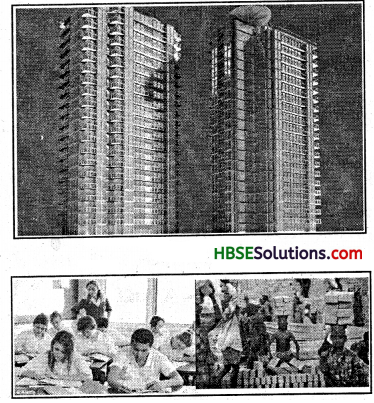



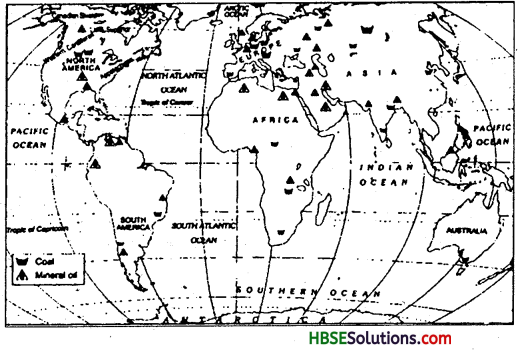
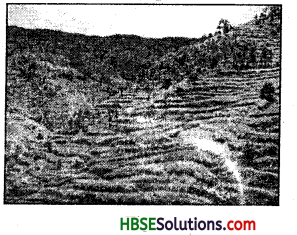
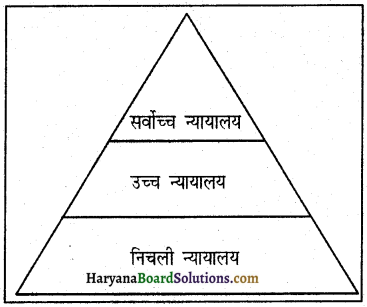
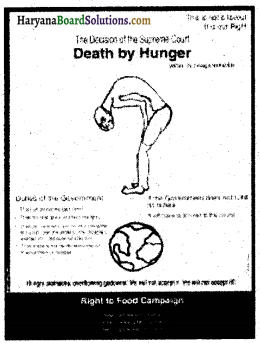
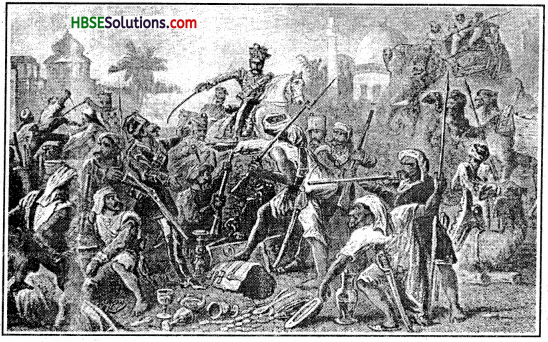
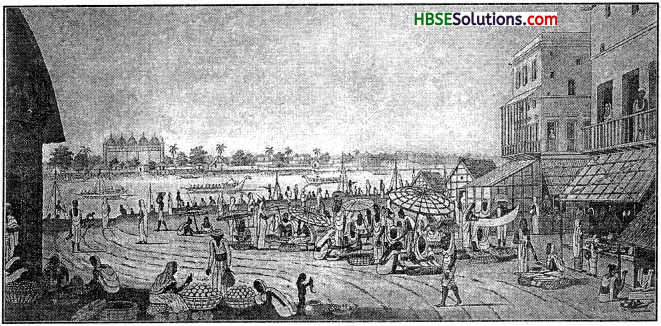
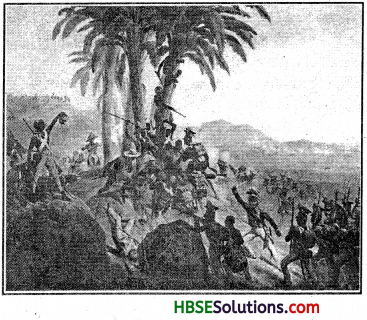
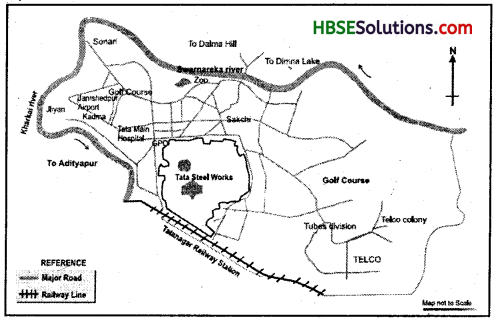
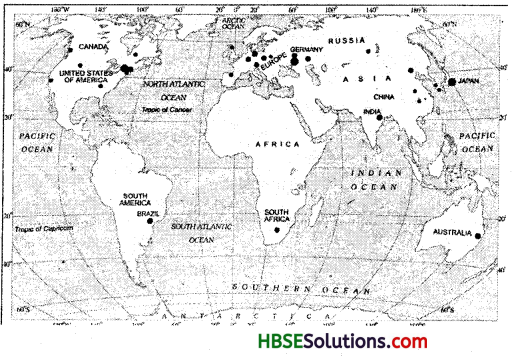
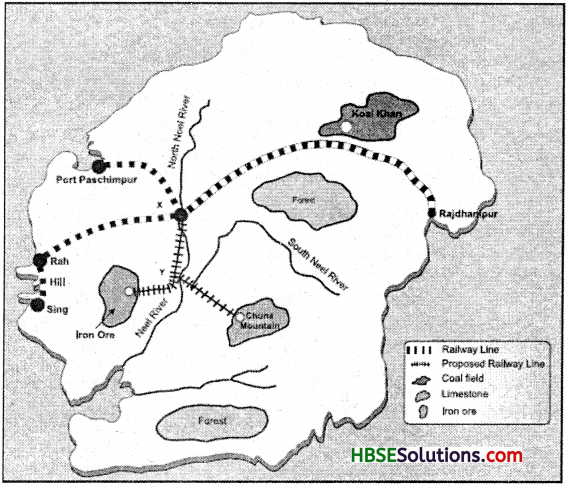

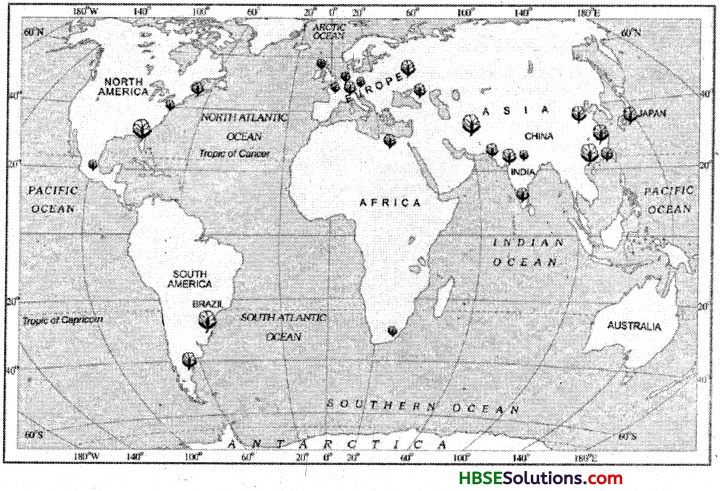 Industries Class 8 HBSE Notes
Industries Class 8 HBSE Notes